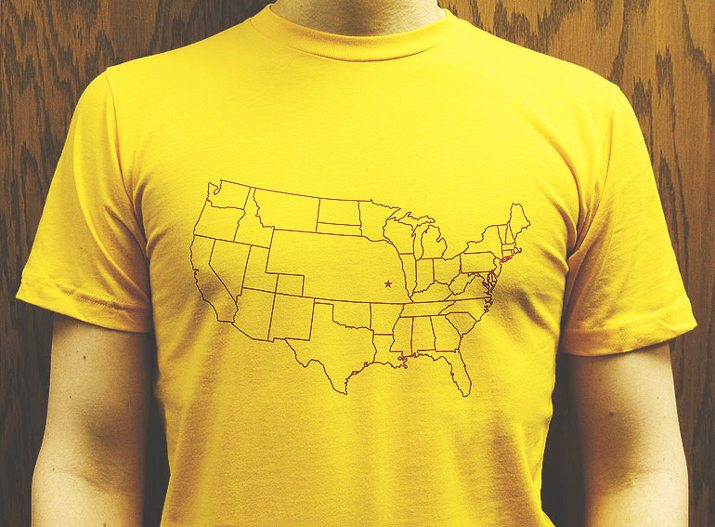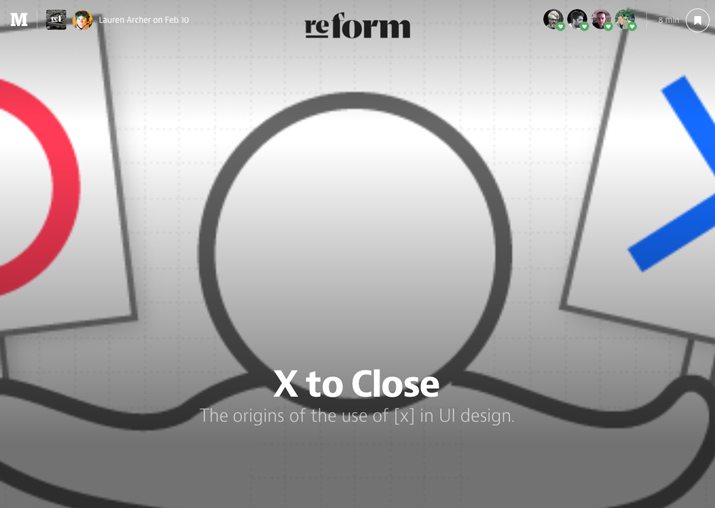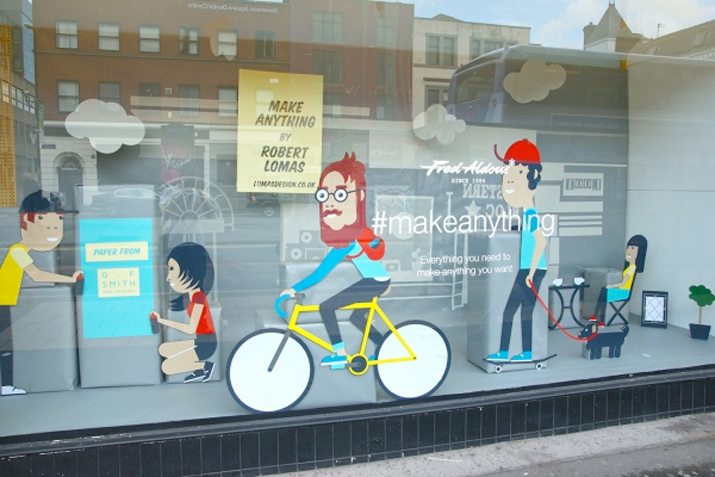This Week in Design: Aug. 22, 2014
Be inspired. Get a raise. Learn something new. Have fun. Those are the goals of every designer at some point in their careers. Lucky for you, we are taking on each one of them this week in design.
Every week, we plan to a look at major product releases and upgrades, tools and tricks and even some of the most popular things you are talking about on social media. And we’d love to hear what’s going on in your world as well. Have we missed anything? Drop me a line at [email protected].
2 Million+ Digital Assets, With Unlimited Downloads
Get unlimited downloads of 2 million+ design resources, themes, templates, photos, graphics and more. Envato Elements starts at $16 per month, and is the best creative subscription we've ever seen.
Get Out and Get Weird

Thanks Justin Kemerling for reminding designers to get weird. Thanks for pointing our something that we sometimes forget in the push of regular deadlines – that the best ideas are often born out of the random.
In “Improve Your Design Skills: Make Things with Weirdos, Not Clients,” designer Kemerling takes readers through some of his most successful design projects and shares a common thread” “They don’t have clients. While their direct financial benefit is slim to none, these self-initiated, collaborative projects have become an important part of getting better at design.”
It happens quite often when you think about it. It’s very much like the phenomenon when you get in the shower, the fix to a design dilemma just comes to you.
Kemerling takes it a step further though and offers some usable thoughts and tips for making great design. Here’s a preview:
- Collaboration is so punk rock: “I was in a punk band in college. … How we made the music taught me a lot about turning nothing into something.”
- Look for fellow makers, thinkers and weirdos: “You get comfortable with communicating ideas, fusing different perspectives, and seeking out honest feedback to make the final, realized idea the best it can be.”
- Make things that don’t need approval: “Design when you aren’t making something that needs to be “approved” is interesting. You’re making it to exist. To be relevant, compelling, funny, thought-provoking, whatever. It’s a different kind of design, but it’s still design.”
- More personal/passion/side projects with others, please: “When you’re a designer, you’re interested in pretty much everything, and designers are particularly well-suited to become their own culture creators.”
What a great read. Go read it today, or next time you are feeling uninspired. I know my creative juices are definitely flowing after this wonderful bit of advice and inspiration.
How Does Your Salary Compare?
Salary surveys can be an interesting snapshot of what designers are doing, titles and roles, how jobs compare. AuthenticJobs.com recently conducted and released a pretty extensive salary survey but more interestingly for designers is the design roles subset that Webdesigner Depot pulled out for us.
How can you use this information? First, it’s a good way to know if you are working at a place with a competitive salary. (Everyone complains about pay from time to time, right? This way you have an idea about where you really fall.) It can help you negotiate when changing jobs or as a freelancer or contractor help you determine how to set rates.
The roundup includes 11 different job positions in the categories of management or non-management roles. Each includes a basic job description, salary range, salary for the middle 50 percent and AIGA median salary. Here’s a roundup of each position type and AIGA median annual salary for each. Make sure to read the full post for more on each position.
- Art Director: $67,500
- Creative/Design Director: $100,000 (agency), $75,000 (in-house)
- Chief Design Officer: $104,500
- Design Manager: $75,000
- Product Manager: middle 50 percent is $68,000 to $92,000
- Junior Designer: $40,000
- Mid-Level Designer: $46,000
- Senior/Lead Designer: $62,500
- Mobile UI Designer: $65,000
- Head of UX: middle 50 percent is $85,000 to $150,000
- User Experience Designer: $80,000
So how do you compare? Do you feel like the job titles and salaries are on par with what you are seeing in the industry? Share your thoughts with us in the comments.
Where Did the ‘x’ Come From?

Have you ever really thought about some of the terms and design divots we use every day? How about “x” in terms of web and digital design?
Honestly I had not thought about it much until recently when I saw a great article on the origins of the “x.” Lauren Archer re:form article, “X to Close,” explains it in words and images. And the history might not be what you would expect.
While the first widespread use dates to Windows 95, the “x” action is older than that and links to a different digital design medium. “[x] is a true icon, not representing a letter but representing an action, and only adopted to represent ‘close’ well after the development of graphics-oriented operating systems,” Archer said in the article. “The first appearance of [x] in GUI design was likely the Atari TOS, possibly influenced by the Japanese batsu and maru conventions.”
The lesson is that a common cultural piece can come from anything. The evolution of the “x” is just one example of that.
What’s New in Creative VIP?

Creative VIP, an exclusive subscription-based network of deals, design resources, discounts and even goodie bags for creative professionals, just got a whole lot better. The site recently launched a redesign and a single subscription plan that includes a ton of design resources and a goodie bag shipped annually.
Here are three brand new deals members are taking advantage of:
- $29 for 12 months of Bootstrap Styler, with lots of new templates to use on the Twitter Bootstrap framework added.
- $10 coupon to use at Sticker Mule, the fastest way to buy custom stickers.
- 20% off Creative Market items, including fonts, themes, photos and more.
Join today. This is a great value for creative professionals.
Just for Fun

Good design shows up in a manner of places and these paper characters for a window display are incredible. The display will fashion the windows of Fred Aldous an art, craft and design materials store in Manchester, England.
Thankfully Creative Boom photographed and shared this wonderful collection for all of us who can’t go see it in person.
The characters were designed and created by designer Robert Lomas, who works at the Design By Day studio. The “Make Anything” project took more than 70 hours to finish and the display will remain though the end of September.





